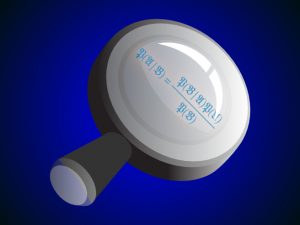 While reviewing reporting on the RNC this afternoon, I found myself curious about the protocols at news organizations with respect to their editorial boards. For instance, does the Washington Post editorial board require that claimed facts within all opinion pieces are not clearly disputed? Does the New York Times? I suspect yes, which is what we see in the lawsuit filed by Sarah Palin against the New York Times concerning the suggestion that Palin’s campaign was relevant to the shooting of Gabby Giffords. There was at least a debate that rose to the level of the Opinion Editor, if not the board.
While reviewing reporting on the RNC this afternoon, I found myself curious about the protocols at news organizations with respect to their editorial boards. For instance, does the Washington Post editorial board require that claimed facts within all opinion pieces are not clearly disputed? Does the New York Times? I suspect yes, which is what we see in the lawsuit filed by Sarah Palin against the New York Times concerning the suggestion that Palin’s campaign was relevant to the shooting of Gabby Giffords. There was at least a debate that rose to the level of the Opinion Editor, if not the board.
I was investigating this because I am curious how WaPo handles Trumpy columnists like Mark Thiessen and Hugh Hewitt, who are mostly cheerleaders without baggage for the current president, with only occasional whataboutisms and other distracting suggestions about Biden’s candidacy. They don’t defend lies and cons. They just cheer. Meanwhile, the board itself came down hard on the repeated falsehoods of Pamela Bondi and the ongoing slaughter of truth in the service of the Trump 2020 campaign.
The mainstream press represents Trump and cronies as conmen and women, manipulative, self-serving, corrupt, cruel, ignorant, ineffectual, morally questionable, and out-and-out liars. And the press uses facts to do so. Yet Trump maintains a remarkable following despite this evidence, with many quizzical onlookers at a loss as to the psychology of Trump’s followers.
In this modern example, there are many, many resources that can be used to fact check and form opinions. Yet people choose to rely on only a few and discount others as being biased.
I was recently reading some fairly detailed Bayesian analysis by philosophers concerning Hume’s argument against miracles. One perspective on the math is that given enough witnesses to an event, and where the witnesses are reliable, the numbers overcome Hume’s non-notational suggestion that miraculous events are so improbable that they are ruled out completely. What’s odd about this level of analysis is that Hume’s language needs to be re-examined into strong/mid/weak hypotheses. It’s a job for philosophers who care about the history of their field. The oddity gets back to my concern about “muscular secularism” and whether there is a place at the intellectual table for religious claims at all.
But enough people believing there must be something hinky about Hunter Biden’s Ukraine involvement doesn’t make it sinister given the other complications. And this is just years old and well documented. Now consider miraculous events like apologists’ claims about the resurrection. It’s really very simple: ancient religious books are not reliable. The reports within them are not reliable. The people who wrote those tales were decades later and are not reliable. There are no reliable witnesses at all. Independent attestation requires actual independence and reliable forms. There are no reliable observations of miracles (whether coincidental, planned, deity-driven, inadvertent, gestural, or otherwise) now or ever.
It’s not that hard to come to grips with, yet Bayesian analysis has been deployed to justify the claims of the New Testament and to refute those same claims. These efforts are interesting insofar as they draw out specific historical facts (Were there pre-existing dying and resurrecting deities in mythologies of the era? Were the gospels independent? Why are there differences in Christologies? And on and on…) but are less interesting in their statistical formulations because each piece of evidence and prior probability construction is contestable and will collapse given a slightly different formulation. So it is the history that is interesting, not the math, but the math serves as a kind of psychological enhancement about the rationality of both arguments.
I wonder whether a day will come when the events described in contemporary political news will be subject to a Bayesian analysis? Given two contending claims about the size of an inauguration crowd and various claims in the press, what are the prior probabilities that one side or the other is lying? One can only hope that the historical record is reliable enough that the answers can be clear and useful to, we must, must hope, more rational versions of our current selves.
Fixed error mapping NYT to WaPo in first paragraph.